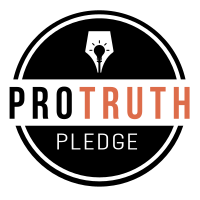Coping With Google Reader Changes
Published:
| by Julian Knight Reading time ~4 min.
📖 Posts
| 📎
Blogging, General
| 🔖
ATOM, Google, RSS
If you are a Google Reader user, you will have noticed the latest design change and probably been amazed at how poor the new layout is. What you may not have immediately noticed is just what you’ve lost. In this article I look at what has been lost and what you might be able to do about it, at least in the short term.
There are a number of lost capabilities that many people have been relying on
The Sharing capability provided other Reader users the ability to see what you shared and you can see what they are sharing.
Notes allowed you to add a note whether linked to an article or not. You also used to be able to add comments to shared articles These things constituted an unofficial API into Google Reader and Google are busy ripping the heart of Reader and replacing most of the “social” aspect with links to Google+. So in the future, instead of marking an article as “Shared”, you will “+1” it and it will appear in your Google+ feed instead of Google Reader. This change will be happening over the next month or so. Thankfully, there are a few things that you can do, at least temporarily. There are a number of Google Reader specific URL’s that you can use to still access some of the information. To make use of most of the following, you will need to know your Google Reader user ID which is a 20 digit number that you can see in your browsers address bar when using Reader, this is marked as <20DigitUserId> in the URL‘s below. The following URL’s will show the various views in the normal web interface:
Shared articles:
http://www.google.co.uk/reader/view/user/<20DigitUserId>/state/com.google/broadcast
No longer available directly from the web interface so it is uncertain how long this will stay usable. It would be sensible to export shared articles while you can using the JSON exports listed below.
Your notes:
http://www.google.co.uk/reader/view/user/<20DigitUserId>/state/com.google/created
Again, no longer directly available, who knows when Google will disable this view. If you really want your notes, it would be sensible to export them while you have the chance (see the information on the JSON formats below).
Your links:
http://www.google.co.uk/reader/view/user/<20DigitUserId>/state/com.google/link
Liked articles:
http://www.google.co.uk/reader/view/user/<20DigitUserId>/state/com.google/like
Stared articles:
http://www.google.co.uk/reader/view/user/<20DigitUserId>/state/com.google/starred
All unread articles:
http://www.google.co.uk/reader/view/user/<20DigitUserId>/state/com.google/fresh
All read articles:
http://www.google.co.uk/reader/view/user/<20DigitUserId>/state/com.google/read
All articles:
http://www.google.co.uk/reader/view/user/<20DigitUserId>/state/com.google/reading-list
Articles with a specific tag:
http://www.google.co.uk/reader/view/user/<20DigitUserId>/state/com.google/label/
is the name of the tag as it appears in your list
All articles in a folder:
http://www.google.co.uk/reader/view/user/<20DigitUserId>/state/com.google/label/_
_ is the name of the tag as it appears in your list. Note that folders and tags are designated in the same way.
All articles in a specific RSS/ATOM feed:
http://www.google.co.uk/reader/view/feed/_
_ is the full URL (including the scheme, e.g. http://)
Friends comments (comments on articles you’ve shared):
You can no longer access these at all from the web interface but the URL would have been:
<a href=“http://www.google.co.uk/reader/view/user/<20DigitUserId>/state/com.google/broadcast-friends-comments”>http://www.google.co.uk/reader/view/user/<20DigitUserId>/state/com.google/broadcast-friends-comments So that’s how to get each of the different types of view in the web interface but what about using these views in other systems such as displaying in a WordPress blog? Well neatly, you can make a simple adjustment to the URL to get an ATOM feed, just replace “view” with “atom” in the URL:
[http://www.google.co.uk/reader/atom/user/<20DigitUserId>/state/com.google/broadcast][1] It is worth noting that the resulting ATOM feed contains tags that define all of the feed types above, read, unread, having a note or comment, liked, shared, starred, tagged or in a folder. The tags take the form:
- and so on.
- In addition, then entry may also have tags related to the original feed, e.g.
Finally, in addition to having an ATOM feed for parsing with an RSS feed reader, you can also get a JSON formatted feed by replacing the “view” with “export/jas” in the URL’s given above. This gives output in JSON Activity Stream format. This isn’t as rich as Google’s own propriatory JSON format which can be accessed by replacing the “view” with “export/json“. The JSON formats also support some additional, optional parameters in the URL:
filename=
Default file name to save
likes=false
n=99999
Maximum number of entries to include
verb=starred
Not sure what this is. Verbs can be: starred, liked, shared, noted, shared
co=false
Include Comments
hl=en
Output Language [1]: http://www.google.co.uk/reader/atom/user/%3C20DigitUserId%3E/state/com.google/broadcast


